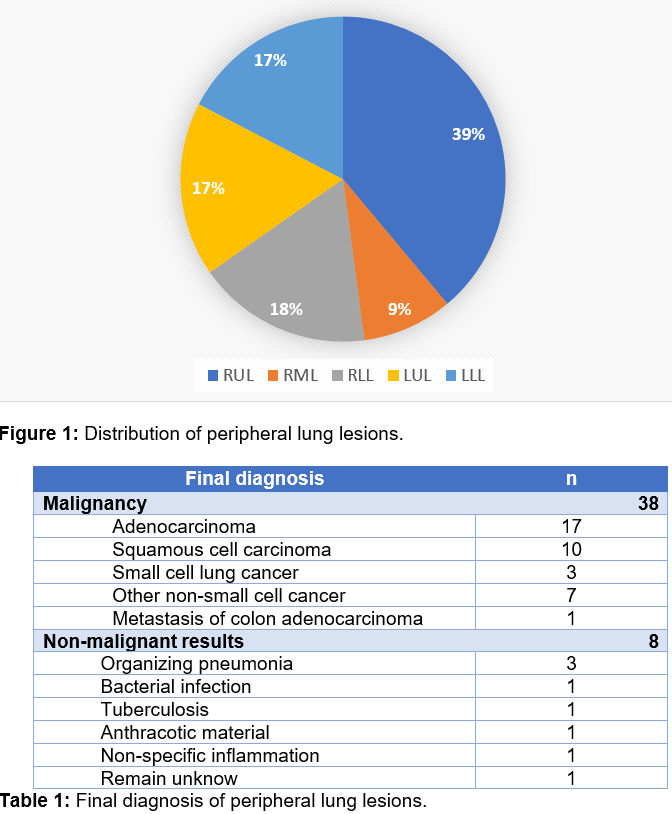Abstract
Introduction and objective: Radial Probe Endobronchial Ultrasound (RP-EBUS) is used to obtain samples of peripheral lung lesions (PLL). The goal was to evaluate the diagnostic yield of RP-EBUS during the first years of its implantation and learning.
Methods: Descriptive retrospective study including 46 patients underwent RP-EBUS without guide sheath and fluoroscopy, January 2021-December 2022.
Results: 46 RP-EBUS were performed. 34 men. Mean age 69(±9) years. 43(92%) with personal smoking history. Figure 1 shows the distribution of PLL. Mean size of PLL was 38(±19) mm. These cases present Bronchus sign on computed tomography and ultrasound. Samples were taken by transbronchial biopsy (TBB). Based on final diagnosis, the sensitivity and the specificity for global diagnosis were 77 % and 100%, respectively, the diagnostic yield (DY) was 78%. In 28 (60%) cases, the lesions were > 30 mm and its DY, 80%; otherwise 18 (40%) lesions were <= than 30 mm and its DY, 60%. Table 1 summarizes final diagnosis of PLL. The only complication observed was moderate bleeding in 3 patients (6,5%).
Conclusions: RP-EBUS without guide sheath and fluoroscopy has an acceptable yield to obtain samples of peripheral lung lesions, similar to series described. Selecting the cases meticulously to perform this technique can increase diagnostic yield and minimize the performance of unnecessary bronchoscopies.